Demonstrations
Helen Bailey
Newcastle Upon Tyne, England

Helen Bailey is a woodturner from Newcastle Upon Tyne in the northeast of England.
Although only turning for a limited time Helen’s work has received many accolades already in her short career. A regular contributor to the World of Woodturners website, Helen has had the majority of her entries featured as the cover of the day.
One of Helen's first pierced pieces was selected with other prestigious work for a touring exhibit of the UK. The American Association of Woodturners has also featured her work in its magazine. Helen believes the quality seen in her work is down to meticulous planning, from the first design which she sketches out to the symmetry of the shapes.
Helens career has catapulted her into the lime light in a very short time, worldwide attention has been drawn to her amazing creations. Helen's work is sought after by individuals and collectors all over the world.
Thin wall turning and piercing techniques
Helen Bailey
In this demonstration I will show how I turn a thin wall bowl. I will be discussing timber selection, holding methods on the lathe, turning techniques to achieve a consistent wall thickness and my sanding process in preparation for demonstrating piercing techniques.

Trinket box with silver embellishing techniques
Helen Bailey
In this demonstration I will show my techniques for turning a small trinket box with silver wire inlay.

Three part natural edge goblet
Helen Bailey
This demonstration will cover natural edge bowl turning, spindle turning and face plate turning as well as different holding methods and the techniques for fitting pieces together.

Three legged pot with texture
Helen Bailey
In this demonstration I will show my techniques for turning an and engrain closed form. I will cover form, hollowing, texturing, coloring as well as spindle turning.

Decorated Box
Helen Bailey
This demo will cover the techniques needed to create a lidded box with finial including timber selection, using jam-chucks, fitting a lid and turning a finial along with some decorative finishes.

Lan Brady
Greensboro, North Carolina

Lan lives near Greensboro, NC and began his wood turning journey in 2000. After watching numerous classes and demos he was hooked and was compelled to try to make whatever he just saw in those classes. Sometimes that worked out and sometimes not, but it was all a good learning experience.
Lan now turns most functional treenware items that are meant to be used. All of his production is gifted or used for reenactment from renaissance fairs to military activities.
Multi-Axis Scoops
Lan Brady
Multi-Axis scoops are used for a variety of activities from dry goods to food and water. By simply offsetting the piece you will find that doing so adds interesting details to the work. These details can be functional as well as decorative.

Multi-Axis Platters
Lan Brady
These are intended as decorative items. The platter becomes an excellent source for adding your creativity of color and details. You can turn, carve, paint, dye and experiment with many other skills.

Louise Butler
Reidsville, North Carolina

As a 4th generation woodworker, I grew up around wood and have been a woodturner and woodturning educator for almost 20 years. By my 4 th woodturning class at Woodcraft in Greensboro, I was teaching for them. The teaching part came naturally to me because by that time I had already been teaching math either at the local high school or community college. Even though I taught full-time before moving into the corporate world, I kept teaching and designing math conceptualize curriculum at the community college for another 30 years. Later I became the Director of the Rockingham Community College Center for Creative Woodworking only transitioning out at the onset of COVID when the focus of became construction trades. I taught woodturning and stained glass for Rockingham Community College and Alamance Community College as well as woodturning for the Sawtooth Center and Klingspor in Winston-Salem. I do private lessons for several students across the state on a regular basis.
Soon I will be opening my own studio in Reidsville for the purpose of teaching woodworking, woodturning, and stained glass. Butler Wood, Glass and Art, where wood turns, glass breaks, and artistic ideas take flight, is under construction and load-in of equipment.
People ask me all the time what I like to do best, and I have to say teach. I love to try new things which is where the rose platter came from. But teaching is my passion.
Bowl Coring Systems Comparison
Louise Butler
Comparison between 3 coring systems: McNaughton, One Way, and Woodcut (order is alphabetical and does not represent a preference).
Investigation of the pros and cons of the 3 most widely used bowl coring systems, sometimes referred to as “center savers”. Is it worth the investment? Topics included but not limited to the following: bowl coring to minimize wood loss, setup, cutters (replaceable and sharpening), limitations of each, and cost.

Resin inlay on platters and plates
Louise Butler
Simulating stained glass in wooden plates and platters. Techniques to add resin to your platters and plates, can be extended to other woodworking projects, to simulate stained glass.
The following will be discussed:
- pattern selection,
- pattern transfer,
- router bit selection,
- router vs CNC,
- resin selection,
- turning,
- and finishing.
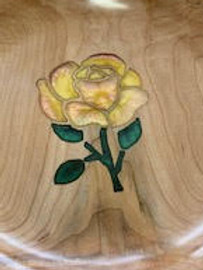

Rebecca Degroot
Houston, Texas

Rebecca is a teacher by training, an artist, and frequent demonstrator throughout North America. Rebecca started woodturning with her father at a very young age. Her dad’s rule was simple, if she could stand on the bucket and reach the lathe, he would teach her how to turn. That’s exactly what he did, and at five years old, Rebecca spent her evenings in the shop turning honey dippers with her father.
While attending Kendall College of Art and Design in Grand Rapids, Michigan, Rebecca found herself back in the school’s basement woodshop. Since graduating in 2014 with two bachelor’s degrees in Art Education and Sculpture and Functional Art, Rebecca has spent the past years juggling her full-time career as an art educator and her passion for woodworking.
Mini Aquifer
Rebecca Degroot
This piece is a turned and sculpted illusion making the sprout appear as though it is drinking the “water” of the droplet from which it grows. In this demonstration, Rebecca will be showing her process to create a resin-wood hybrid blank with included root and sprout growing from the earth while the root “drinks” from the water from the aquifer. Rebecca will be sharing how she cast clear blanks without flaws, how she turns resin without chipping and shattering, creating and carving the sprout and root form, painting a gradient on the sprout, and assembling everything into the finished piece.

Walking Muschrooms
Rebecca Degroot
Rebecca will walk you through the process of creating her signature walking mushrooms. She will begin by turning a simple mushroom cap, prepared for pyrography texture, followed by turning a body ready to be carved. Each mushroom has at least three turned legs, which are cut apart, and using spline joinery, reassembled into new forms. Once the lathe work is finished, Rebecca will show you how she carves the body to create a curved neck, use a wood burner to create texture underneath the cap, drill, and countersink holes in the body for the legs. Finally, after all the individual pieces have been carved, shaped, burned, and sanded, Rebecca shows you the assembly process and presents the finished piece!
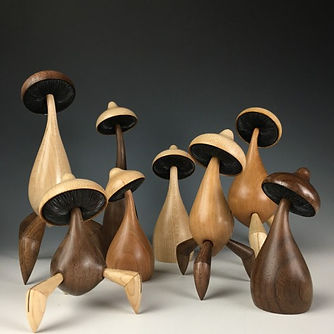
Walking Bowl
Rebecca Degroot
Rebecca will be going over basic design concepts and walking you through the steps to create a three-legged Walking Bowl in my own style. She will work my way through the process of basic bowl turning, plotting an oversized foot, carving that foot into individual hips, turning spindle legs, cutting the legs apart at appropriate angles, reattaching them into a new form, then assembling all of the parts into a finished piece.
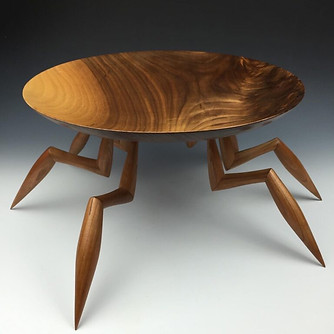
Three-piece Thin-Stemmed Goblet
Rebecca Degroot
Rebecca will be going over her process of completing a thin-stemmed goblet that will incorporate multiple pieces of contrasting wood. This process will give you the ability to create stems as long as you’d like without the challenge of hollowing a cup at the end of such a long piece. With this process, the proportions, wood combinations, and design opportunities are endless for creating a unique goblet. If time permits, Rebecca might even be able to show you how to create an alternate base to transform your thin-stemmed goblet into a walking goblet!

Crystal Earley
Greensboro, North Carolina

Crystal is a third-generation woodworker as well as a stained glass artist, beekeeper and rock collector. Eyes either down looking for rocks or up looking at trees, Crystal has zero sense of direction, but a keen eye for nature and its endless beauty. Whether making a complete mess or turning a stunning bowl, Crystal is happiest in her shop covered in sawdust and surrounded by woodchips.
Inside Out Ornaments
Crystal Earley
Inside Out Ornaments are created by gluing and taping four pieces of square stock together, turning a profile on the inside face, then reversing and reassembling the parts to expose a hollowed-out shape. The final turn creates a dynamic, optical illusion-like ornament with a sculptural interior.
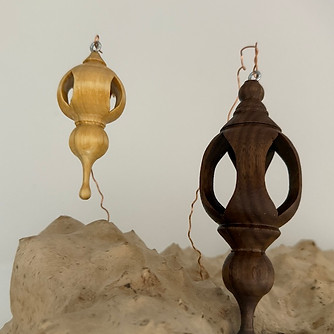

Ornamental Turning / Split Turned Picture Frames
Crystal Earley
Split Turning is a woodturning technique where two pieces of wood are glued and taped together, turned as one unit between centers, and then split apart after turning. The turned surface ends up as the face of your final piece, offering a mirrored, symmetrical design.

Jim Echter
Penfield, New York

With over 50 years’ experience in custom woodturning and teaching, Jim Echter specializes in spindle turning and produces Drop Spindles, Knitting Needles, Kick Spindles, Nostepinnes and other tools for spinners and fiber artists. Being married to a professional longarm quilter, he also produces tools for quilters such as a Quilting Appliqué Presser. He is well known for his architectural restoration work. Jim also writes articles for the Journal of the American Association of Woodturners (AAW). True Creations’ woodturning studio is located in the beautiful Finger Lakes region of Upstate New York in a suburb of Rochester.
The love for woodworking started at a very young age for Jim when he started pounding a chisel into a board at the ripe old age of five. He first ventured into whittling, then sculpture, and finally progressed into furniture making. That’s when he purchased his first lathe and the rest is history.
“Spindling” Your Way to Better Bowls and Boxes
Jim Echter
If you’ve made a few basic bowls, simple platters or boxes and now want to progress so you can refine your profiles and add details like beads and coves, then “Spindling is the easiest way to develop the skills needed.
For hundreds of years, woodturning apprenticeships taught spindle turning before face grain turning. The reason is the turner developed much better tool control and a feel for how wood likes to be cut. These skills can easily be transferred to bowl turning, taking your projects to the next level.
This program will walk you through the basics on how to teach yourself spindle turning and how to apply those skills to enhance your bowls and boxes. The tools and their proper use will all be demonstrated and a series of practice exercises will be shown.
Beginner, Intermediate and Advanced
Mini-Lathe Friendly
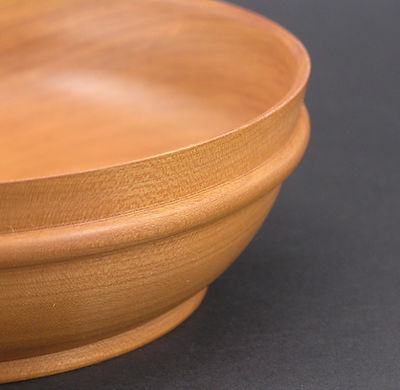
The Sensational Skew
Jim Echter
Back by popular demand, in this demonstration Jim will take the mystery out of how to use the skew so it becomes the sensational tool in your arsenal.
Utilizing a combination of images, large scale models and actual demonstrations, the use of the skew will be broken down into very understandable bites of information. The program will overview skew profiles, edge profiles, sharpening procedures, basic cuts, advanced cuts, and learning exercises. Project ideas will be demonstrated that will help you build confidence with using this sensational tool.
Beginner, Intermediate and Advanced
Mini-Lathe Friendly
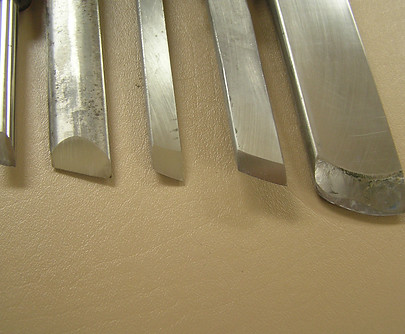

Kurt Hertzog
Rochester, New York
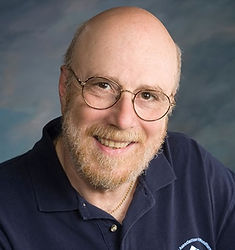
Kurt has more than 250 woodturning related articles internationally published since 2008. His regular columns in Woodturning Magazine began in 2012. It has included Workholding Aids and Chucking, Woodturning Know How, What You Need to Know and continues today with his Question & Answer Column titled Kurt's Clinic. His columns, The Journey from Penturning to Penmaking and Behind the Scenes, for Woodturning Design magazine ran from 2008 until WTD ceased publication in late 2014. Additional articles have been published in American Woodturner, More Woodturning and Woodturning FUNdamentals. He is past President of the American Association of Woodturners, one of the three Council Members of the Pen Makers Guild, and past Chairman of the Rochester Woodworkers Society.
Penmaking — The Basics and Beyond
Kurt Hertzog
Learn the basics of penturning starting at the very beginning covering materials, tools and equipment, adhesives and finishes, and processing. You’ll learn material and kit selection, blank cutting drilling and gluing, facing, workholding, turning to size, sanding, finishing, and assembly. We’ll start right at the beginning so total newbies to pen turning are welcome. You’ll find out what is needed and what isn’t.
Those with experience will also get benefits with different techniques along with tips and tricks. Bring your problem pens and other issues for the question-and-answer session if time permits.

Penmaking — Stretching Yourself
Kurt Hertzog
Building on the “basics and beyond”, we’ll continue with the finer points of all the penmaking covered building on each. Geared for those with some experience turning pens but newcomers will also gather ideas and techniques. Learn the finer points of creating perfection in your pens. Additional topics will include display ideas, tips and tricks, repairs/error corrections, pricing, marketing, and more. We’ll cover blank creation, laser cut products, special kit pens and kitless pens, and casting resins. We will have special emphasis on presentation techniques. Bring problem pens and other issues for the question-and-answer session if time permits.
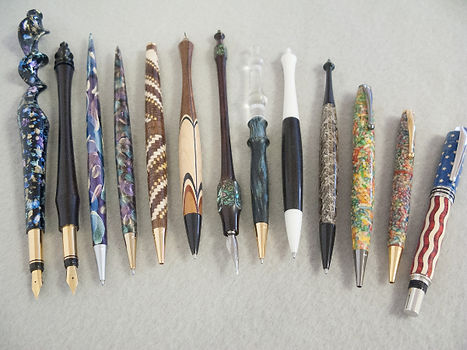
Workshop Tips and Tricks
Kurt Hertzog
If you want to save time, money, and space while improving your throughput and quality, this workshop is for you. We’ll cover equipment selection and setup, tool storage and use, sharpening techniques and tricks, workflow, raw material storage, chemical selection and usage, workholding techniques and tips, and more. Whether you are a woodturner, woodworker, carver, piercing artist, or painter, there will be enough tidbits in this session to save you money, time, and space. The time you save will give you more time to create. Bring in your shop/equipment problems to share with the group and get solutions.

Alan Leland
North Carolina

Alan Leland is an internationally known woodturning instructor and demonstrator. He has won accolades from his students and his fellow woodturners for his exceptional handouts and his ability to share his skills and techniques. Alan is able to explain the various skills and techniques required to truly enjoy woodturning with a patient and thorough teaching style. In all of his demonstrations and workshops, Alan emphasizes and explains the techniques he is using and explains the light touch and finesse required to produce his delicate turnings.
Turning A 24” Tall Three legged Stool
Alan Leland
I will cover how I turn a 24” tall Three Legged Stool including drilling the seat and the mortices in the legs for the cross brace. I will include a short discussion of the drill press table set up I use to drill the holes in the seats. I will also cover the tool techniques I use for faceplate turning and between centers turning including the grinds I use on my tools. I will demonstrate how I drill the mortises in the legs for the stretchers. This will be an excellent demo for anyone interested in turning furniture parts or other functional items with an artistic flair.

Hollow Globe Ornament
Alan Leland
In the first part of the demonstration I will be turning a hollow globe. I will discuss a few of the tools available for hollowing small turnings and the methods I use to turn a squashed globe. I will delve into the techniques I use for turning an elegant and delicate icicle to add to the globe. The hollow Globe ornament is one of my specialties and one of my favorite items to turn.

Matt Monaco
Lake of the Ozarks, Missouri

Matt Monaco operates a full-time woodturning studio in the Ozark region of Missouri, and is one of the only full-time modern traditional woodturners in America having trained & apprenticed within the handmade trade landscape as a working professional — Working closely within the high-end professional furniture production, Shackleton Thomas Furniture & Pottery as full-time in house wood turner; which preceded a time period of training, and skill development while earning a living as a full-time item producer within both the wholesale trade show, and retail circuit.
At the center of Matt’s work is his understanding & mastery of fine form, tool control, sharpening and cutting execution as an expression of traditionally crafted design as fine art -- in producing forms & items that are made to be as tactile as they are sublime, and created with intent & purpose. Matt is also a Fine Woodworking Contributor & Ambassador who values both the integrity of traditional woodturning and mastery of the craft as an art, as well as diversity and mutual equity within the handmade craft and woodworking idiom.
The Skew Chisel - Developing Advanced Tool Control
Matt Monaco
The Skew Chisel — Developing advanced tool control, finesse, and fine form.
This demonstration will introduce, and reinforce beginning to advanced methodology & usage with the skew chisel; the ergonomics and necessity of balance required in using the tool for excellent results in general usage and in shaping effectively with a high efficiency (requiring minimal to no sanding at the lathe) and how to practice with, and sharpen the skew effectively

Elegant Ceramic Style Open Vessel
Matt Monaco
Elegant Ceramic Style Open Vessel —Advanced usage with gouges & the spear.
This demonstration will share how to turn a classic, pottery inspired open form footed vessel; using traditional gouges & the spear to cut tear out free surfaces, while exploring basic-advanced freehand tool modifications and application.

Classic Wood Pottery Vessel
Matt Monaco
Classic Wood Pottery Vessel —Fine form in perspective, freehand sharpening, and developing eye for design.
This demonstration will share how to turn a classic, pottery inspired semi-enclosed vessel; using traditional gouges & the spear to cut tear out free surfaces, while exploring basic-advanced freehand tool modifications, application, and design & aesthetic philosophies for turning a variety of fine enclosed form.


Fine Detail Platter — Trade & Production
Matt Monaco
Fine Detail Platter — Trade & production item made in volume for fine furniture maker Shackleton Thomas, and for the wholesale craft industry.
This demonstration will share preferred options, and the advantages of scraping, burnishing and cutting effectively on face grain surfaces, and how the process of acquiring the skill of advanced tool usage, and developing an eye for form, naturally leads to better results as a maker for the longer term– and with proper tool selection, modification and application.
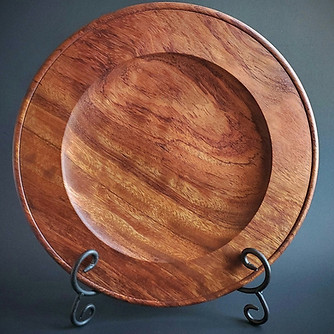
Laurent Niclot
Fort Collins, CO
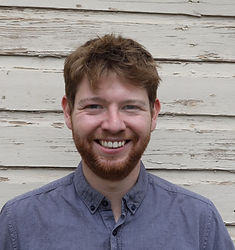
Originally from Southern France, now living in Colorado Laurent has always loved wood. While working on a degree in woodworking and furniture design, he discovered woodturning and knew it was his passion. At age 20, he participated in the six-month long woodturning class at the Escoulen School in Aiguines, France. After the class, Laurent was hired and worked as the studio coordinator for 3 years. Today, he continues to make work and teach woodturning. His interests include traditional woodturning, texturing, coloring, multi-axis turning, carving and hollowing. He has taught his techniques around the world, including Belgium, France, Canada and the US. Laurent considers his work experimental and his aim is to make pieces that are sculptural, decorative, and designed with a strong message or a story to tell.
Miniature Hollow Forms
Laurent Niclot
In this demo, we will be turning and hollowing several miniature hollow forms (varying in size and shape) using my signature Niclot Mini Hollowers. I will use different tools for the outside shape focusing on getting a nice cut. We will talk about how to gauge the thickness and I will give the audience the opportunity to choose from a variety of textures to add another element to the form.
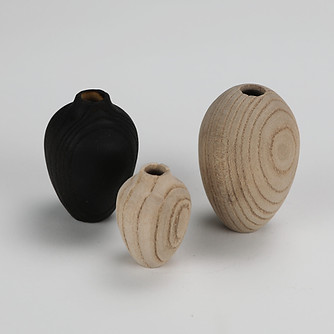
Miniature Teapot
Laurent Niclot
Turning of a miniature teapot (approximately an inch) using the bedan and demonstration on how to use it with the bevel up for spindle turning, hollowing of the teapot with miniature hollowing tools. Then turning of the lid and the spout (magnifiers not included) and coloring using Indian ink and gilding wax to create the Damascus steel effect. Finally, an explanation on how the make the handle using a wire and a cotton string on the lathe.

Exploration in Multi-Axis Turning
Laurent Niclot
In this demo I will talk about the two main principles of multi-axis turning. I will introduce a variety of shapes and ways to cut the material to create different designs and achieve unique forms. These techniques can be applied to a plethora of projects, such as boxes, vases, furniture, and sculptural forms.

Multi-Axis Drop
Laurent Niclot
Turning and turning off-center of a drop using a spindle gouge and a skew. Then carving of the top of the drop using gouges and rasps to make it thinner and have two different curves on the back and the front giving it an illusion of movement. And finally, texturing of the drop using a woodburner to create a Steampunk design, a combination of gears and metal plates, and coloring using Indian ink and gilding wax.

Spiral Carving
Laurent Niclot
Using a previously turned form, drawing of a spiralling design, carving using power tools to make the design both concave and convex. Then, using a woodburner and rotary tools, texturing of the flutes and beads created. Then coloring the form with ink and gilding wax (optional). The techniques used in the presentation can be applied on a multitude of forms. The texturing possibilities presented will open the participants minds and encourage them to try these techniques with whatever tools they have available, without having to procure specific burrs.

Jack Roberts
Gainesville, Florida

Jack first woodturning began in high school shop class in 1967. Years later, functional woodworking became artistic woodturning. Jack has been a club president for over 10 years to two different AAW chapter clubs. He is currently doing demonstrations and teaching a variety of woodturning techniques.
A background of automotive collision repairs is incorporated in his present work using color and high gloss finishes. Specializing in bowls, boxes, and hollow forms. Jack’s craftsmanship is a fusion of traditional technique and modern finishing mastery—creating pieces that stand out both visually and in craftsmanship.
Long Neck Hollow Forms
Jack Roberts
Hollow form with a tall elegant neck, soft curves with a wide flared rim. This piece is hollowed from both ends. Often turned from light colored wood and dyed with a high gloss finish


Speed Box
Jack Roberts
A conventional box, turned in an unconventional way.
This box is turned from a glue block, without the use of a chuck. This is the perfect box for a beginning turner, or to do a series of production boxes. Box is turned, textured and colored.


Double Rim Bowl
Jack Roberts
A bowl turned on multiple axes. The technique used for this turning can be applied to a variety of other turnings.


Dr. Seri Robinson
Oregon

Dr. Seri Robinson is a professor of wood anatomy, an avid woodturners and sculptor. Their areas of interest revolve around the use of wood decay fungi for both artistic (spalting) and scientific purposes. They know an unhealthy amount about fungi and wood science, and love to share tips for turning spalted and figured wood from an anatomical perspective. They have written several reference guides for woodturners around these themes, including 'Spalted Wood: The History, Science & Art of a Unique Material' and 'Living with Wood: A Guide for Toymakers, Hobbyists, Crafters, and Parents'. Dr Robinson lives in Oregon with their wife, kids and a Flemish giant rabbit name Sir Chip Edmonton III.
Spalting 101
Seri Robinson
Everything you ever wanted to know about spalted wood! This talk will cover the ancient history and modern uses of spalted wood, starting from the 1400s European intarsia to modern woodturning and science applications. Learn about the fungi that cause spalting, how to induce exactly the type of spalting you want in your wood, and best techniques for turning and finishing spalted wood. Spalting safety will also be covered.
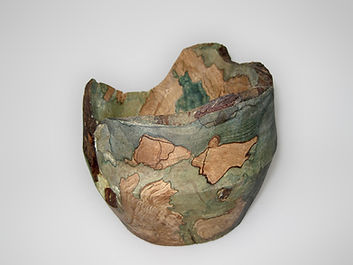
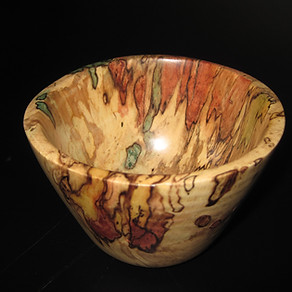
Turning Splated and Figured Wood
Seri Robinson
Tips, Tricks, and Tools for working with unusual wood
Anyone who has turned a punky piece of spalted wood, or a piece of curly maple, knows that the ‘rules’ of woodturning often go out the window. Woods with soft and/or irregular grain present unique challenges to woodturning, and you can save yourself a lot of frustration and sanding by considering how you present your tool, how much bevel you rub, and the speed of your lathe. This class will do a deep dive into the unique anatomy of spalted and figured woods and demonstrate how to turn them with minimal tearout and, with luck, very little need to sand.
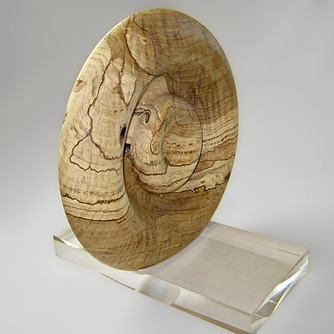
Wood Myth Busters
Seri Robinson
Explore wood fact from fiction, and how understanding the biology of wood can help make you a better woodturner. Bring your weirdest, wildest questions about wood and get answers (and some amusing graphical depictions) from a wood scientist. This talk is always very lively, so don’t be surprised if you walk away thinking, “Wow. Everything I knew about wood was wrong!"

